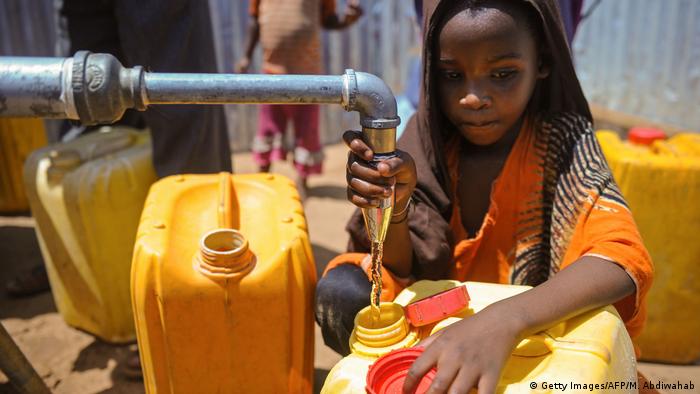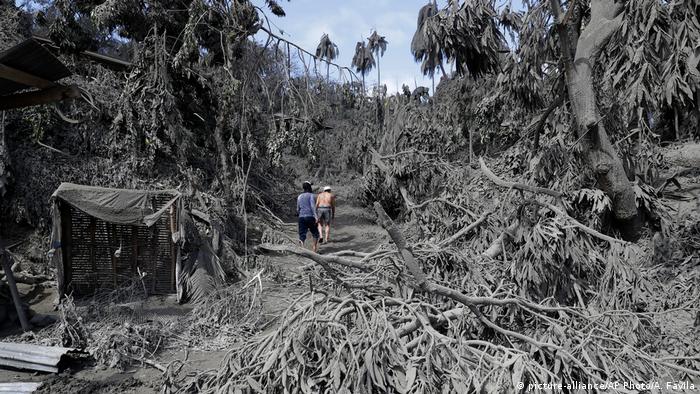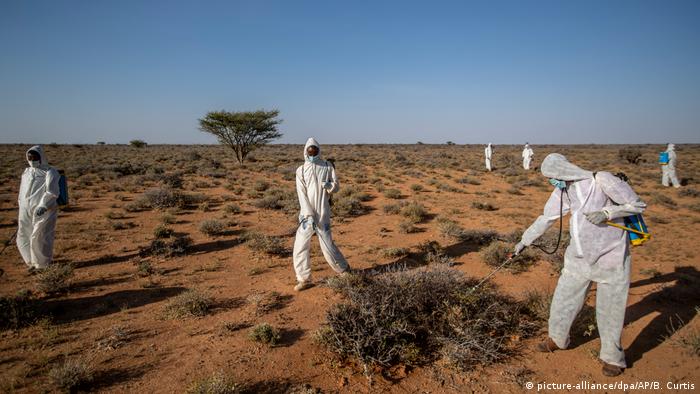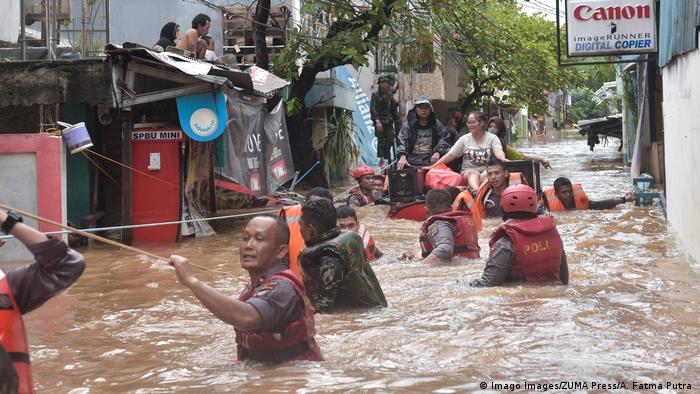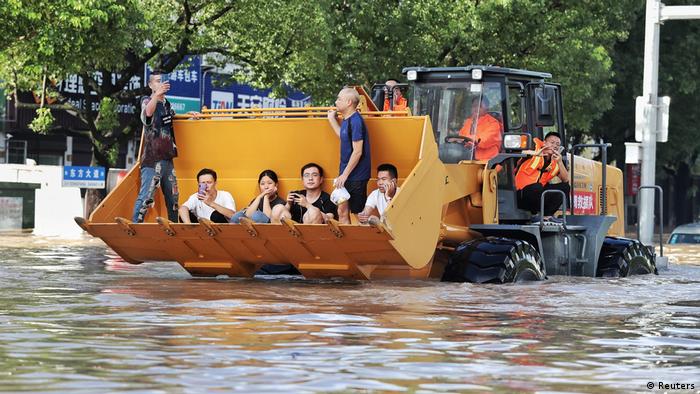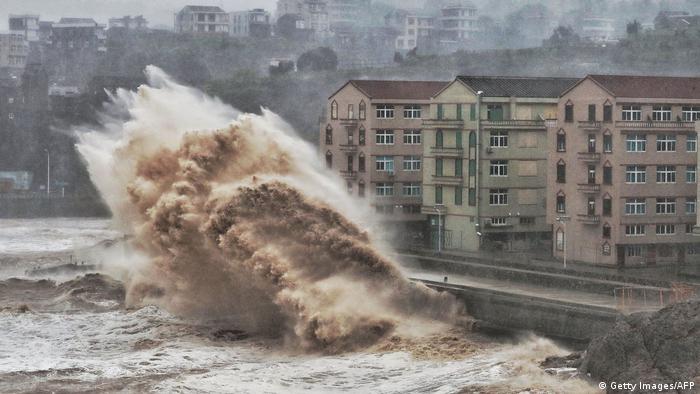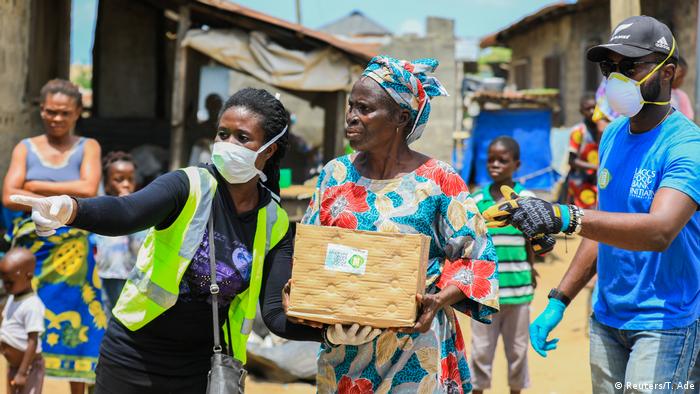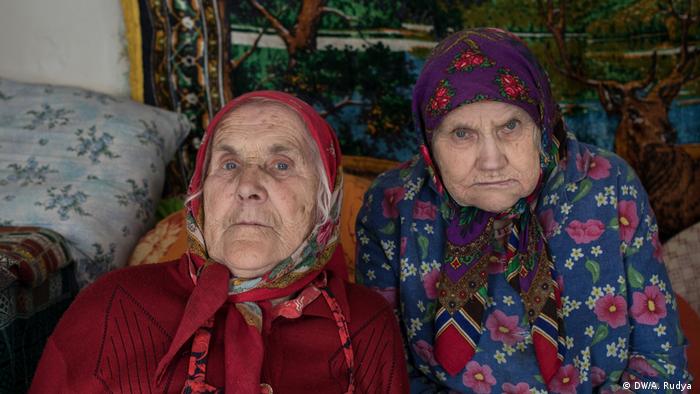
April 25, 2020 By Chauncey Devega, Salon- Commentary
As of Friday, the coronavirus pandemic has killed at least 50,000 people in the United States. That number is likely to be an undercount, and it’s possible we will never have a true reckoning.
This article first appeared in Salon.
At almost every juncture, Donald Trump has made decisions about the coronavirus pandemic that have led to more death. His behavior is that of a person who has no care or concern for the health, safety and welfare of the American people. Nothing could epitomize that more perfectly than his grotesque suggestion this week that “injecting” disinfectants or household cleaning products might kill the coronavirus. This would seem comical, and entirely unbelievable, if it had not actually happened.

In 2016 the Obama administration told then President-elect Trump and his advisers of the high likelihood that a pandemic would strike the nation and advised the incoming administration to take appropriate steps to reduce its impact. Obama officials also left their Trump counterparts a step-by-step guide on how to respond to a pandemic. Trump and his inner circle ignored that guidance.
Last November, the U.S. military warned Donald Trump that the country was likely to be afflicted with a devastating pandemic originating in China.
In January 2020, the Trump administration was told by its own experts that the coronavirus would spread beyond China and become a global pandemic. Again, Trump chose inaction.
Trump has deprived Democratic-led regions of the country from receiving needed medical supplies. He also waited months to begin using the Defense Appropriation Act to compel American companies to produce more ventilators, masks and other emergency equipment.
Late last year, Americans working with the World Health Organization began to warn Trump and his administration about the coronavirus pandemic. These doctors and other medical professionals were ignored.
In these examples and many others, Trump and his inner circle ignored or purged experts and other truth-tellers, and lied about, misrepresented, deflected or denied the dire threat to the American people posed by the coronavirus pandemic.
Considered in total, Trump and his regime have shown themselves to be incompetent, callous, malevolent and deeply cruel in their response to the coronavirus crisis (as well as to a plethora of other issues).
But to merely document the Trump regime’s deadly failures in response to the coronavirus pandemic is to ignore the most important question: What were Trump and his advisers’ underlying motivations?
This forensic question must be answered if we are ever to have a full accounting of the coronavirus, and see justice done for the sick, the dead and the dying as well as the damage done to the broader American community.
Now the press needs to shift some of its focus and ask the truly alarming questions about Trump and his motives. Because we still don’t know why he essentially ordered the federal government to stand down for the virus invasion.
Psychologist and psychotherapist John Gartner, contributor to the bestselling book “The Dangerous Case of Donald Trump” and co-founder of the Duty to WARN PAC, has an answer: Donald Trump is a malignant narcissist. Our president’s mental pathologies inexorably compel him to hurt and kill large numbers of people — including his own supporters.
Dr. Gartner taught for many years at the Johns Hopkins University Medical School, and has private therapeutic practices in Baltimore and New York, specializing in the treatment of borderline personality disorders. In our most recent conversation, he explains that sadism and violence are central to Trump’s malignant narcissism and his decision-making about the coronavirus pandemic. Gartner also warns that Donald Trump is an abuser locked into a deeply dysfunctional relationship with the American people and that, like other sadists, Trump enjoys causing harm and suffering.
Ultimately, Gartner concludes that Donald Trump is engaging in “democidal behavior” and cautions that the tens of thousands of dead (so far) from the coronavirus pandemic are not simply collateral damage from Trump’s policies, but rather the logical outcome of Trump’s apparent mental pathologies and the poor decisions that flow from them.
This conversation has been edited for clarity and length.
Donald Trump’s behavior is very predictable. He has a very simple mind. Why do so many people treat him as some type of mystery? Why do they claim to be so “surprised” by his vile behavior?
Yes, Donald Trump is simplistic. But an atomic explosion is also very simple.
How does the human mind remain in denial about Trump’s nature when on an almost daily basis he reveals his true nature through his cruelty, lies, violence and other anti-social behavior? There are many Americans who oppose Trump who continue to claim that they are somehow surprised by his behavior?
Malignant narcissists are very sick people. They are sick in such a deep, disturbed and dark way that a normal person cannot comprehend such behavior. Therefore, normal, mentally healthy people cannot imagine or understand the mind of a malignant narcissist.
As a mental health professional, what do you see when you watch Trump’s so-called briefings about the coronavirus pandemic?
Trump is both denying responsibility by saying things such as, “I take no responsibility. We’ve done everything right.” But at the same time, Trump is also sabotaging the efforts to stop the coronavirus pandemic. This is a very important aspect of Trump’s behavior. Trump is not just deflecting blame onto the governors, he is actively interfering with the governors’ ability to do their job. Trump is not just incompetent. He is actively engaging in sabotage.
How does someone with his type of mind reconcile claims like “I have total power” with “I take no responsibility”? He has said both things within a few days of each other.
That is a function of how the psychology of a malignant narcissist is structured. When Trump says things such as, “I have total power,” that’s the grandiosity. “I’m in total control” is a function of Trump’s paranoia, where everything bad is projected outward. Therefore, anything negative or bad is someone else’s fault. Bad things are other people in Trump’s mind. The grandiosity and “greatness” are all him. Trump’s mind runs on a formula which bends and twists facts, ideas and memories to suit his malignant narcissism. This is why Trump contradicts himself so easily. He lies and makes things up. His fantasies all serve his malignant narcissism and the world he has created in his own mind about his greatness.
The fourth component of Trump’s malignant narcissism is sadism. That part of Trump’s mind is more hidden. People such as Trump are malignant-narcissist sadists because they, at some deep level, are driven to cause harm to other people. Trump’s life is proof of this. He enjoys ripping people off and humiliating people. He does this manically and gleefully. He has lied more than 16,000 times. He threatens people online and elsewhere. I believe that Donald Trump is also a sexual sadist, who on some basic level enjoys and is aroused by watching people be afraid of him. In his mind, Trump is creating chaos and instability so that he can feel powerful.
Professor of psychiatry and psychoanalyst Otto Kernberg called that phenomenon “omnipotent destructiveness.” The bullying, the violence, the destruction, frightening people, humiliating people, getting revenge and the like — such behavior is what Donald Trump has done his whole life. It is who Donald Trump really is. Unfortunately, too many people are still in denial of that fact.
If Donald Trump is primarily obsessed with omnipotent destruction, how is that fueling his behavior?
Donald Trump has to create a field of negative corrupting energy around himself. For example, he pressures the scientific experts to bend the truth to his dreamworld during his press conferences. The scientists are basically Trump’s hostages. The American people are hostages as well to Donald Trump. We are being abused by him. We know that Trump is lying. We know that he’s doing nothing to help us. We feel helpless to do anything to stop him. It is causing collective mental despair. In this way Donald Trump is inducing feelings of rage and outrage — and he keeps doing it. It is not that all Americans are suckers or dupes, it is that Trump is a master at such cruel and manipulative behavior. Donald Trump knows exactly what he is doing to the physical and emotional health of the American people.
I envision Donald Trump as a megalomaniacal puppet master. The American people are his little marionettes. The American people must acknowledge that relationship to cut the strings.
That is a great analogy. Donald Trump is a master at getting negative attention, and the more people he can shock and upset, the better. Donald Trump has been doing such a thing for years.
The pandemic has provided Trump with the opportunity to use his skill at doing such things into overdrive. America, with this coronavirus crisis, is now “The Trump Show.”
Society is a type of family. Leaders are fathers, mothers, and other types of parental authority figures. In that role, Donald Trump is abusing the American people.
Yes, the American people are being abused by Donald Trump. This is a key dimension of sadists. I also believe that Donald Trump is democidal. I would even go so far as to say that he is a “democidal maniac”. If you look at human history there is one trait that all malignant narcissistic leaders have in common: They kill mass numbers of their own people. Why would Donald Trump be any different?
Trump has had many public moments where one can see the convergence of his rage, misogyny and violence. Trump’s press conferences have been a showcase for his pathologies. There is so much rage when a reporter makes clear that Trump is lying or asks him a basic question that challenges his self-delusions and fantasies. Trump’s rage at women who challenge him, in particular nonwhite women such as PBS reporter Yamiche Alcindor, is palpable.
It is probably not lost on Trump that the people who are being disproportionately killed by the coronavirus are people in Democratic blue states and cities: nonwhite people, poor people, other marginalized people in this society, working-class people. These are the people who Donald Trump sees as “less than,” inferior to him, the types of people he likes to grind down under his heel.
In the course of a week, we literally had Trump’s cultists, his spokespeople, saying, “People should sacrifice themselves for the economy.” Literally go out and die. Of course the real meaning there is, “I want you to go out and die so that I can be re-elected because I’m dependent on the economy.” Trump and his allies have been telling people to go out and risk their lives as an act of loyalty to “the economy.” And of course Trump is willing to see people die to ensure — at least in his mind — that he will be re-elected. In many ways he is positioning himself as a god who demands human sacrifice.
Such behavior and beliefs are common among malignant narcissists. Malignant narcissists like Donald Trump view other human beings as kindling wood to be burned for their own personal enrichment and enlargement and expansion.
Beyond mere negligence, much of Trump’s and his regime’s behavior is malevolent. Trump and his sycophants knew that potentially millions of Americans could die but chose to do nothing. His administration has gone so far as to purge people from the government who were trying to warn the public.
Again, that behavior is part of the psychology of malignant narcissistic leaders. They are democidal. Malignant narcissistic leaders kill many of their own people through wars and political terror, but also through willful incompetence. These types of leaders actively do things that will kill large portions of the population. Causing harm is a type of addiction for them. Donald Trump’s addiction is only getting worse.
In January 2020, the Trump administration was told by its own experts that the coronavirus would spread beyond China and become a global pandemic. Again, Trump chose inaction.
Trump has deprived Democratic-led regions of the country from receiving needed medical supplies. He also waited months to begin using the Defense Appropriation Act to compel American companies to produce more ventilators, masks and other emergency equipment.
Late last year, Americans working with the World Health Organization began to warn Trump and his administration about the coronavirus pandemic. These doctors and other medical professionals were ignored.
In these examples and many others, Trump and his inner circle ignored or purged experts and other truth-tellers, and lied about, misrepresented, deflected or denied the dire threat to the American people posed by the coronavirus pandemic.
Considered in total, Trump and his regime have shown themselves to be incompetent, callous, malevolent and deeply cruel in their response to the coronavirus crisis (as well as to a plethora of other issues).
But to merely document the Trump regime’s deadly failures in response to the coronavirus pandemic is to ignore the most important question: What were Trump and his advisers’ underlying motivations?

This forensic question must be answered if we are ever to have a full accounting of the coronavirus, and see justice done for the sick, the dead and the dying as well as the damage done to the broader American community.
Media critic (and former Salon writer) Eric Boehlert summarizes the importance of determining Donald Trump’s motives this way:Maybe Trump’s vengeful. Maybe he wants to wreck the economy to create investment opportunities? He’s under the thumb of a foreign entity? He wants to cause panic and cancel the November elections? He’s a fatalist? Who knows. And honestly, the specific “why” isn’t what matters now. What matters is asking the difficult questions and pondering what the Trump presidency is truly about, no matter what lurks in the shadows….
As I stressed last week, the media’s preferred storyline that suggests Trump is simply incompetent doesn’t add up because Trump has made the wrong decision every single time in terms of how crises like this are supposed to be dealt with. (i.e. Be consistent, transparent, factual, and credible.) It’s increasingly not believable for the press to suggest Trump has been distracted or inept during this crisis, in part because of the level of White House uselessness has become so staggering.
Now the press needs to shift some of its focus and ask the truly alarming questions about Trump and his motives. Because we still don’t know why he essentially ordered the federal government to stand down for the virus invasion.

Psychologist and psychotherapist John Gartner, contributor to the bestselling book “The Dangerous Case of Donald Trump” and co-founder of the Duty to WARN PAC, has an answer: Donald Trump is a malignant narcissist. Our president’s mental pathologies inexorably compel him to hurt and kill large numbers of people — including his own supporters.
Dr. Gartner taught for many years at the Johns Hopkins University Medical School, and has private therapeutic practices in Baltimore and New York, specializing in the treatment of borderline personality disorders. In our most recent conversation, he explains that sadism and violence are central to Trump’s malignant narcissism and his decision-making about the coronavirus pandemic. Gartner also warns that Donald Trump is an abuser locked into a deeply dysfunctional relationship with the American people and that, like other sadists, Trump enjoys causing harm and suffering.
Ultimately, Gartner concludes that Donald Trump is engaging in “democidal behavior” and cautions that the tens of thousands of dead (so far) from the coronavirus pandemic are not simply collateral damage from Trump’s policies, but rather the logical outcome of Trump’s apparent mental pathologies and the poor decisions that flow from them.
This conversation has been edited for clarity and length.
Donald Trump’s behavior is very predictable. He has a very simple mind. Why do so many people treat him as some type of mystery? Why do they claim to be so “surprised” by his vile behavior?
Yes, Donald Trump is simplistic. But an atomic explosion is also very simple.
How does the human mind remain in denial about Trump’s nature when on an almost daily basis he reveals his true nature through his cruelty, lies, violence and other anti-social behavior? There are many Americans who oppose Trump who continue to claim that they are somehow surprised by his behavior?
Malignant narcissists are very sick people. They are sick in such a deep, disturbed and dark way that a normal person cannot comprehend such behavior. Therefore, normal, mentally healthy people cannot imagine or understand the mind of a malignant narcissist.
As a mental health professional, what do you see when you watch Trump’s so-called briefings about the coronavirus pandemic?
Trump is both denying responsibility by saying things such as, “I take no responsibility. We’ve done everything right.” But at the same time, Trump is also sabotaging the efforts to stop the coronavirus pandemic. This is a very important aspect of Trump’s behavior. Trump is not just deflecting blame onto the governors, he is actively interfering with the governors’ ability to do their job. Trump is not just incompetent. He is actively engaging in sabotage.

How does someone with his type of mind reconcile claims like “I have total power” with “I take no responsibility”? He has said both things within a few days of each other.
That is a function of how the psychology of a malignant narcissist is structured. When Trump says things such as, “I have total power,” that’s the grandiosity. “I’m in total control” is a function of Trump’s paranoia, where everything bad is projected outward. Therefore, anything negative or bad is someone else’s fault. Bad things are other people in Trump’s mind. The grandiosity and “greatness” are all him. Trump’s mind runs on a formula which bends and twists facts, ideas and memories to suit his malignant narcissism. This is why Trump contradicts himself so easily. He lies and makes things up. His fantasies all serve his malignant narcissism and the world he has created in his own mind about his greatness.
The fourth component of Trump’s malignant narcissism is sadism. That part of Trump’s mind is more hidden. People such as Trump are malignant-narcissist sadists because they, at some deep level, are driven to cause harm to other people. Trump’s life is proof of this. He enjoys ripping people off and humiliating people. He does this manically and gleefully. He has lied more than 16,000 times. He threatens people online and elsewhere. I believe that Donald Trump is also a sexual sadist, who on some basic level enjoys and is aroused by watching people be afraid of him. In his mind, Trump is creating chaos and instability so that he can feel powerful.
Professor of psychiatry and psychoanalyst Otto Kernberg called that phenomenon “omnipotent destructiveness.” The bullying, the violence, the destruction, frightening people, humiliating people, getting revenge and the like — such behavior is what Donald Trump has done his whole life. It is who Donald Trump really is. Unfortunately, too many people are still in denial of that fact.
If Donald Trump is primarily obsessed with omnipotent destruction, how is that fueling his behavior?
Donald Trump has to create a field of negative corrupting energy around himself. For example, he pressures the scientific experts to bend the truth to his dreamworld during his press conferences. The scientists are basically Trump’s hostages. The American people are hostages as well to Donald Trump. We are being abused by him. We know that Trump is lying. We know that he’s doing nothing to help us. We feel helpless to do anything to stop him. It is causing collective mental despair. In this way Donald Trump is inducing feelings of rage and outrage — and he keeps doing it. It is not that all Americans are suckers or dupes, it is that Trump is a master at such cruel and manipulative behavior. Donald Trump knows exactly what he is doing to the physical and emotional health of the American people.
I envision Donald Trump as a megalomaniacal puppet master. The American people are his little marionettes. The American people must acknowledge that relationship to cut the strings.
That is a great analogy. Donald Trump is a master at getting negative attention, and the more people he can shock and upset, the better. Donald Trump has been doing such a thing for years.
The pandemic has provided Trump with the opportunity to use his skill at doing such things into overdrive. America, with this coronavirus crisis, is now “The Trump Show.”
Society is a type of family. Leaders are fathers, mothers, and other types of parental authority figures. In that role, Donald Trump is abusing the American people.
Yes, the American people are being abused by Donald Trump. This is a key dimension of sadists. I also believe that Donald Trump is democidal. I would even go so far as to say that he is a “democidal maniac”. If you look at human history there is one trait that all malignant narcissistic leaders have in common: They kill mass numbers of their own people. Why would Donald Trump be any different?
Trump has had many public moments where one can see the convergence of his rage, misogyny and violence. Trump’s press conferences have been a showcase for his pathologies. There is so much rage when a reporter makes clear that Trump is lying or asks him a basic question that challenges his self-delusions and fantasies. Trump’s rage at women who challenge him, in particular nonwhite women such as PBS reporter Yamiche Alcindor, is palpable.
It is probably not lost on Trump that the people who are being disproportionately killed by the coronavirus are people in Democratic blue states and cities: nonwhite people, poor people, other marginalized people in this society, working-class people. These are the people who Donald Trump sees as “less than,” inferior to him, the types of people he likes to grind down under his heel.

In the course of a week, we literally had Trump’s cultists, his spokespeople, saying, “People should sacrifice themselves for the economy.” Literally go out and die. Of course the real meaning there is, “I want you to go out and die so that I can be re-elected because I’m dependent on the economy.” Trump and his allies have been telling people to go out and risk their lives as an act of loyalty to “the economy.” And of course Trump is willing to see people die to ensure — at least in his mind — that he will be re-elected. In many ways he is positioning himself as a god who demands human sacrifice.
Such behavior and beliefs are common among malignant narcissists. Malignant narcissists like Donald Trump view other human beings as kindling wood to be burned for their own personal enrichment and enlargement and expansion.
Beyond mere negligence, much of Trump’s and his regime’s behavior is malevolent. Trump and his sycophants knew that potentially millions of Americans could die but chose to do nothing. His administration has gone so far as to purge people from the government who were trying to warn the public.
Again, that behavior is part of the psychology of malignant narcissistic leaders. They are democidal. Malignant narcissistic leaders kill many of their own people through wars and political terror, but also through willful incompetence. These types of leaders actively do things that will kill large portions of the population. Causing harm is a type of addiction for them. Donald Trump’s addiction is only getting worse.


Donald Trump is a human predator. That is what he does. He will not change. At this point, I hold the American people, the news media, the Republican Party and its voters ultimately responsible for the calamity that is Trump’s reign.
The 2020 presidential election will decide either the life or death of America.
What would you tell those Americans and others who would object to your analysis of Trump and the danger he represents? Because many people would protest that whatever Trump’s flaws may be, of course he loves America, and it’s inconceivable we would have a president who would actively seek to harm the American people.Follow the facts to the obvious and true conclusion. If all the facts show that Donald Trump is a malignant narcissist with these powerful sadistic tendencies, this omnipotent destructiveness, where he’s getting pleasure and a sense of power from dominating people and degrading people and destroying people and plundering people and laying waste to people, both psychologically and physically, then to deny such obvious facts is willful ignorance.
What do you think Donald Trump will do if, shortly before Nov. 3, it appears clear that he is going to lose the election?
Rather than making a prediction as to Trump’s specific actions, it is more helpful to describe the type of actions he will take. Rather than trying to say, “This is the move he’ll make.” Like in a relationship, Donald Trump is the abuser. He is the husband or father who is abusing his partner or children or other relatives. The American people are like a woman who is leaving her abuser. She tells her abuser, “That’s it! I am done with you!” She has her keys in hand and is opening the door of the house or apartment to finally leave. What happens? The democidal maniac Donald Trump will attack us, badly. Make no mistake. Donald Trump is going to find a way to attack and cause great harm to the American people if he believes that he will lose the 2020 election

























